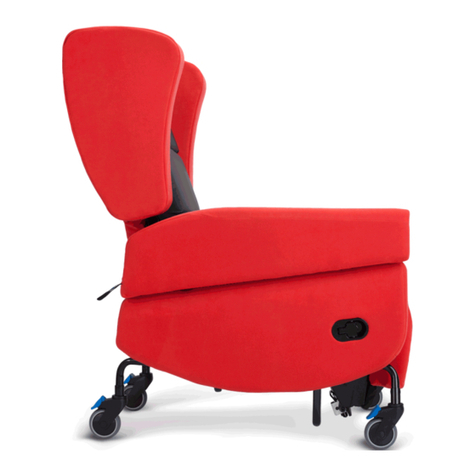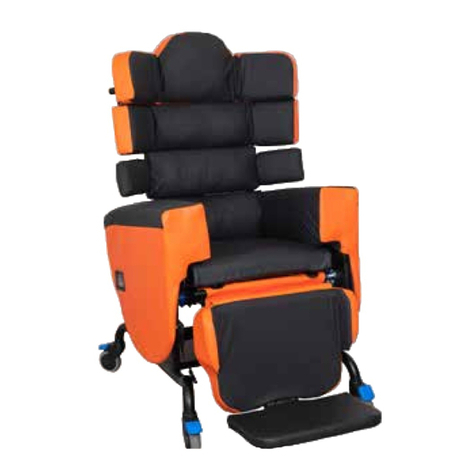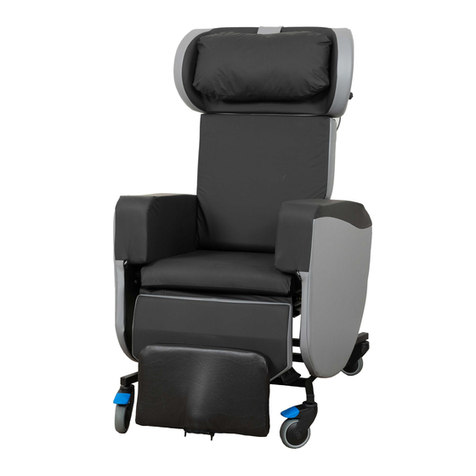UI SmartSeat iss01, 03/2013
Seat Width
Seat width affects side-to-side pelvic stability.
This is important as the spine should line up
centrally with the pelvis. If the pelvis is free
to move to one side then the client’s spine
will usually lean in the opposite direction. As
gravity pulls the client over, the spine will begin
to curve to compensate as the client tries to
keep their head level. The client will take on
a characteristic ‘S’ shaped spine or scoliosis.
The more upright the user’s trunk is, the more
critical pelvic stability becomes. It is, therefore,
important to use a chair with the correct seat
width in order to position the pelvis properly.
Seat width should always allow for a little bit
of movement as the client’s body weight and
posture naturally shifts throughout the day.
If the client is held in a rigid position, they will
quickly tire and experience discomfort.
Adjusting Seat Width:
1. Each arm of the SmartSeat has a unique
adjustment mechanism which allows the arm
to be moved in or out relative to the centre of
the chair.
2. To release the mechanisms, locate the
tabs on the back of the arms. Pull the tabs
backwards until they stop. To reduce seat
width, by moving the arms in towards the
centre of the chair, place the palm of your hand
in the middle of the outside face of the arm
and push the arm inwards. To increase seat
width by moving the arms out from the centre
of the chair, place your hand in the middle of
the arm against the inside face and pull the
arm outwards.
9
Correct seat width;
client sits ‘midline’.
Seat Too Wide; client
tends to lean to one
side.
Pull the tabs on the back of the arms to
release the mechanism to adjust seat width.
Pull the tab out and push the middle of the
arm to reduce the seat width.






























